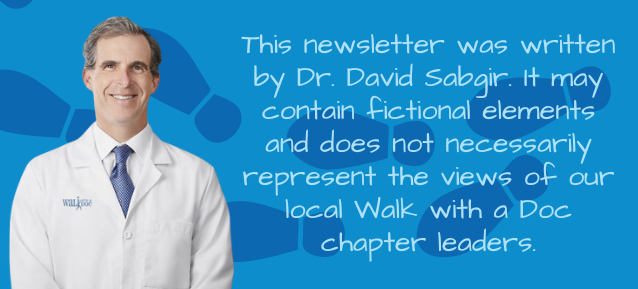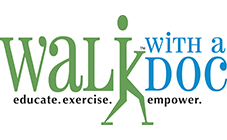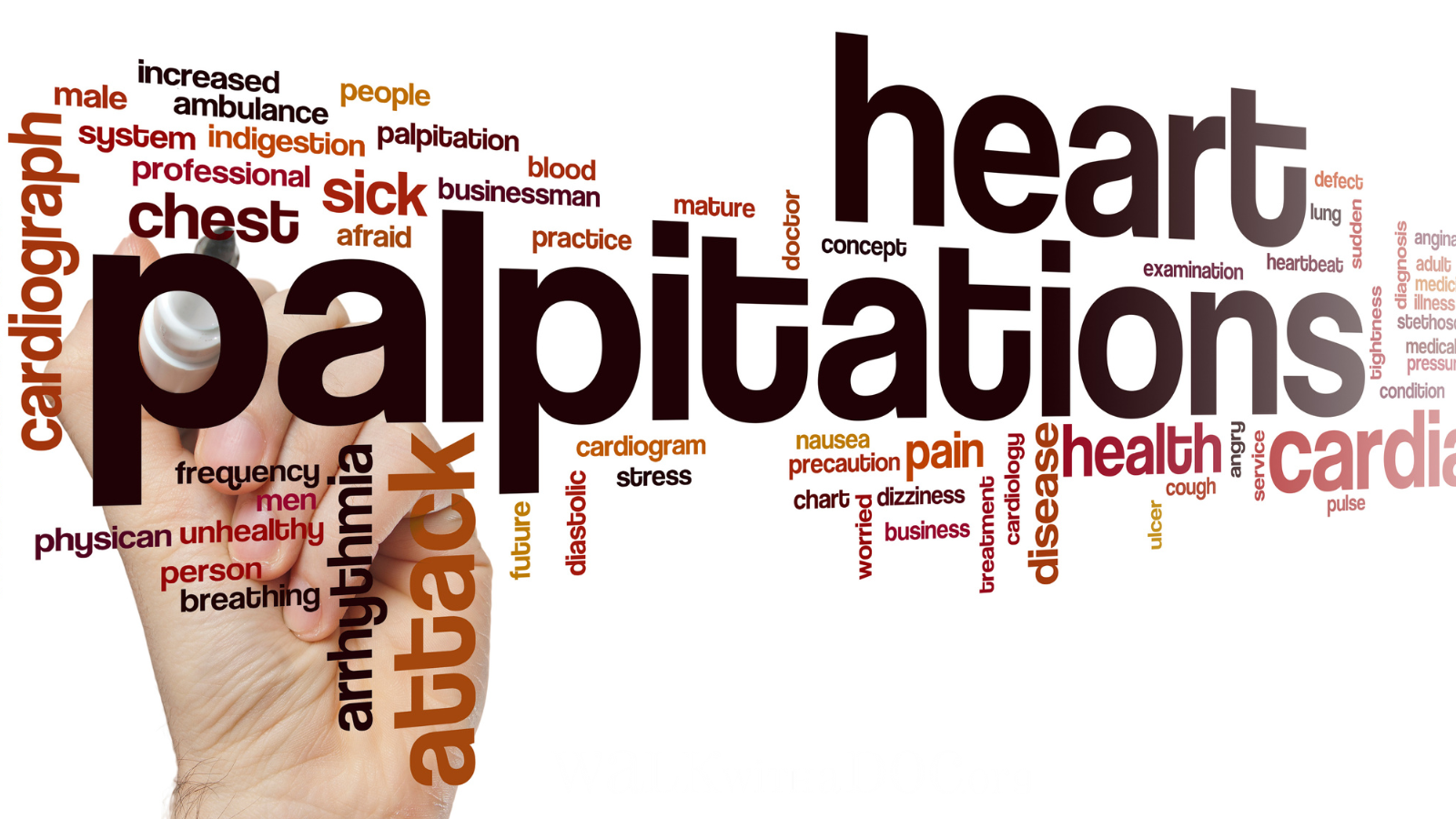Good morning! It’s been a beautiful week, right? Here’s hoping you’re taking care of yourself with a walk break or two.
How many steps a day is ideal? These researchers feel they found the sweet spot.
Here are some tips to help you get there. Our team also put together this walking guide.
Okay, palpitations.
As cardiologists, we frequently see patients with palpitations. In early 2025, I am seeing them more than ever. There is nothing to worry about in almost all situations, but I would love to take you through a typical work-up, or at least most of it.
The majority of people we meet with palpitations are having premature ventricular and/or premature atrial contractions (PVCs and PACs). Most office patients mention appreciating them primarily in the evening when winding down. They usually last only seconds and they describe them as a “quick flutter”, or “extra beats”, “flip flops” or they mention very brief chest pain. All of these sensations understandably may feel very concerning.
What causes them?
Let’s first share that over 60% of us have these. Circumstances in my experience that may increase their frequency include:
Poor sleep or sleep apnea, increased stress or anxiety, low potassium levels, mitral valve prolapse, abnormal thyroid levels (T4), and of course tobacco, alcohol, and caffeine (yes, that includes chocolate).
What am I feeling?
Because there is a premature beat, the heart has longer to fill for the subsequent contraction. In this squeeze, it may pump out 50% more blood than on a ‘normal’ beat. That large ejection of blood can give that feeling of a jolt.
What tests do we order?
Every situation is unique, but one test I always order is an EKG (10-second heart tracing with 12 leads). Occasionally, I will also get a rhythm strip (long EKG).
I may order a 24 or 48-hour Holter monitor (all-day EKG).
In this discussion, we are talking about PVCs/PACs – but I, and your doctor, will likely want to make sure it’s not another arrhythmia such as atrial fibrillation (see 1/31/25 newsletter), atrial flutter, ventricular tachycardia, etc. If there are cardiovascular risk factors (smoking, high blood pressure, etc.) I will often get an echocardiogram and occasionally a stress test.
How do I get rid of PVCs?
So you’ve corrected the possible causes and they’re still bugging you.
Honestly, if we determine that the symptoms are correlated to PVCs, most of my patients are relieved and don’t want medicines (beta-blockers are the typical first choice) because they (a) don’t like BBs and/or (b) they understand that the side effects may potentially be worse than the symptoms. However, it’s not uncommon that PVCs can disrupt your quality of life and something needs to be done.
We have also used calcium channel blockers or antiarrhythmics for those times.
If these don’t work and you’re still having issues, there is a relatively simple ablation procedure where we go into the heart and zap them. That is quite rare for PACs/PVCs.
Ok, thanks for the free consult. Now I’m good, right?
Nope. Please make sure your doctor is aware because it’s not always PVCs/PACs and they will want to know about them.
What does exercise do for PVCs?
Thought you’d never ask. Exercise lowers stress and anxiety levels and indirectly lowers your PVCs. It also allows for better sleep and decreased cravings for cigarettes.
You and your questions are truly important to us. Because we want to make sure you receive the appropriate medical workup, we’re choosing not to answer medical-related questions via email.
That said, our volunteer Walk Leaders are eager to share their thoughts in person at a Walk with a Doc event. For goodness’ sake, that’s why we’re here.
David
Stay Hungry. Stay Foolish.
– David

About Walk with a Doc:
As an international non-profit organization, Walk with a Doc is committed to inspiring communities through movement and conversation with walking groups led by local doctors, healthcare providers, or medical students.
Started in 2005 by Dr. David Sabgir, a cardiologist in Columbus, Ohio, the program now extends to hundreds of throughout the world. The walks are a fun, free, and safe place to get physical activity, learn tips for healthy living, and meet new people.
Learn more at www.walkwithadoc.org
20th Anniversary
We’re celebrating Walk with a Doc’s 20th anniversary this year! Each time you attend and check in at a Walk with a Doc event, you’ll be entered into our raffle for various prizes throughout the year.
The first raffle drawing will be for a $100 gift card to the WWAD store. The winner will be selected on our birthday – April 9th – so attend as many WWAD events between now and then to increase your chances of winning!
*If you or your organization are interested in donating/sponsoring raffle prizes this year, please respond to this email and let us know.
More reasons to check-in with your smartphone at each walk:
- Keep walks free by helping us show the impact of the program.
- Grow our community & expand to new locations
- Celebrate your milestones—every step counts!
- Quick & green—30 seconds to check in, then enjoy your walk!


